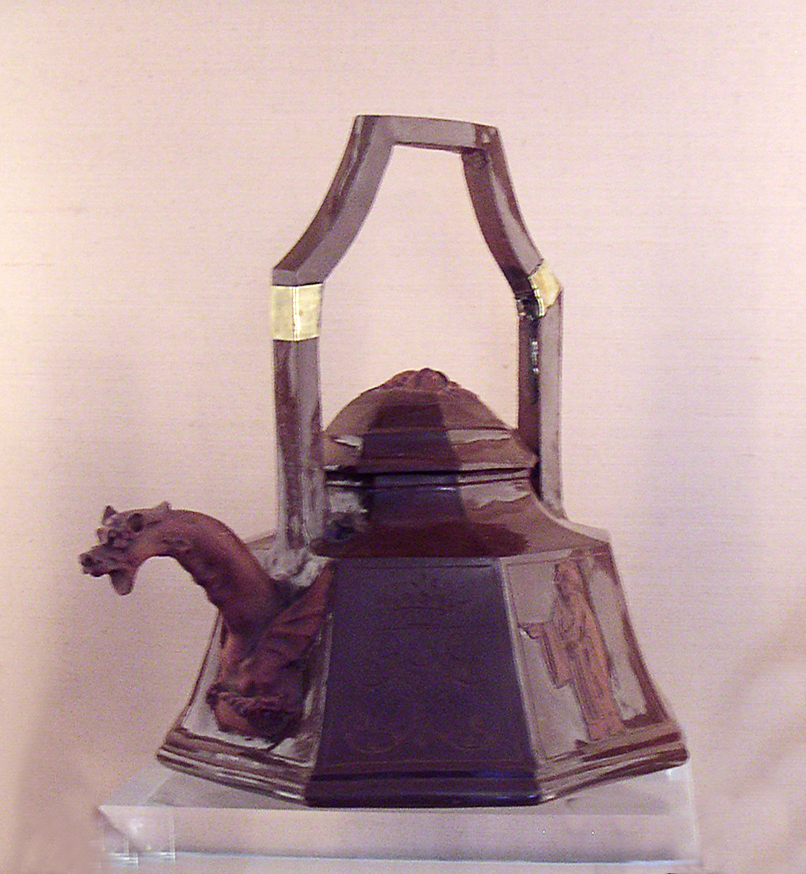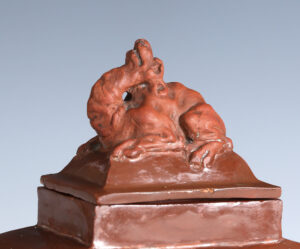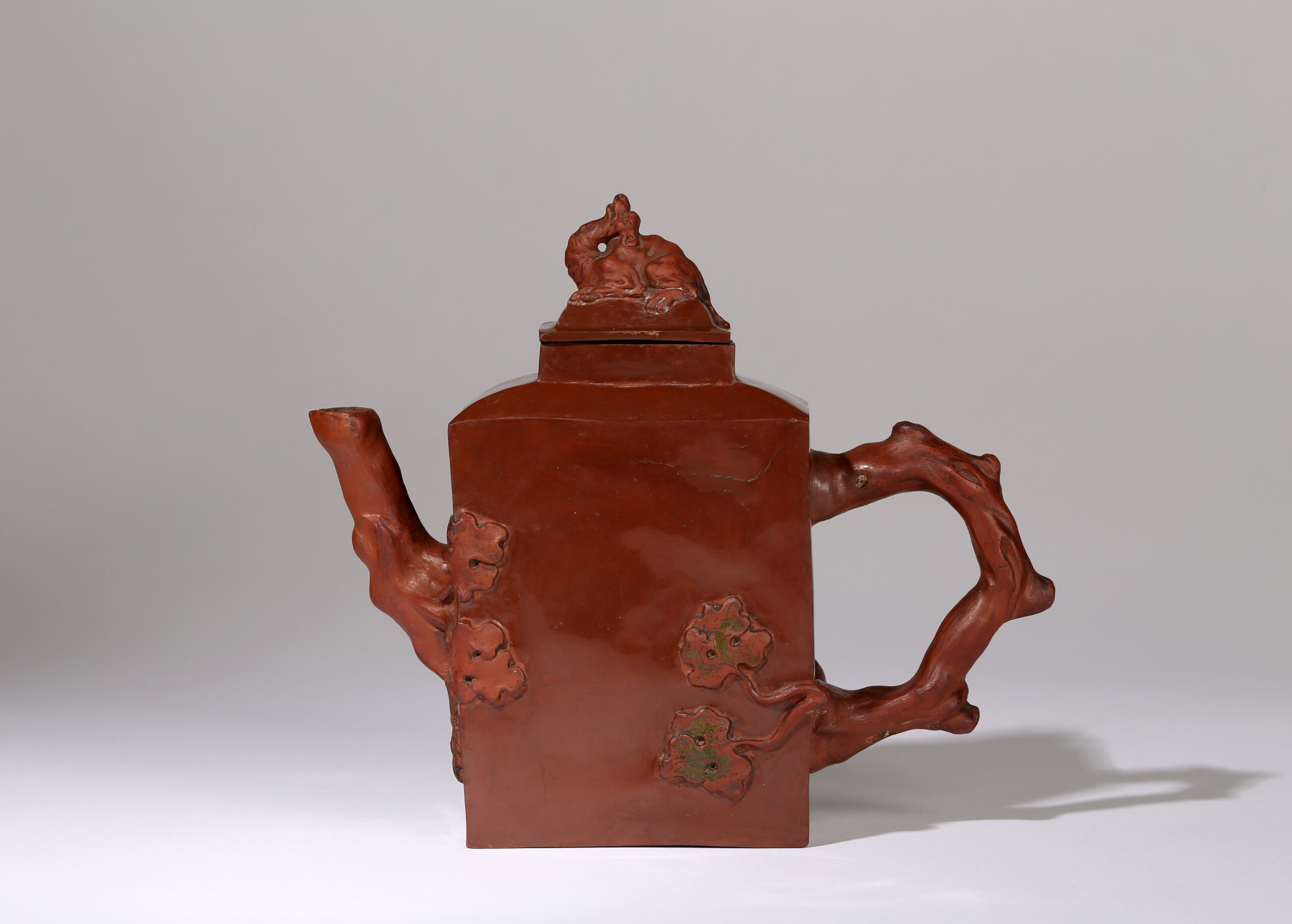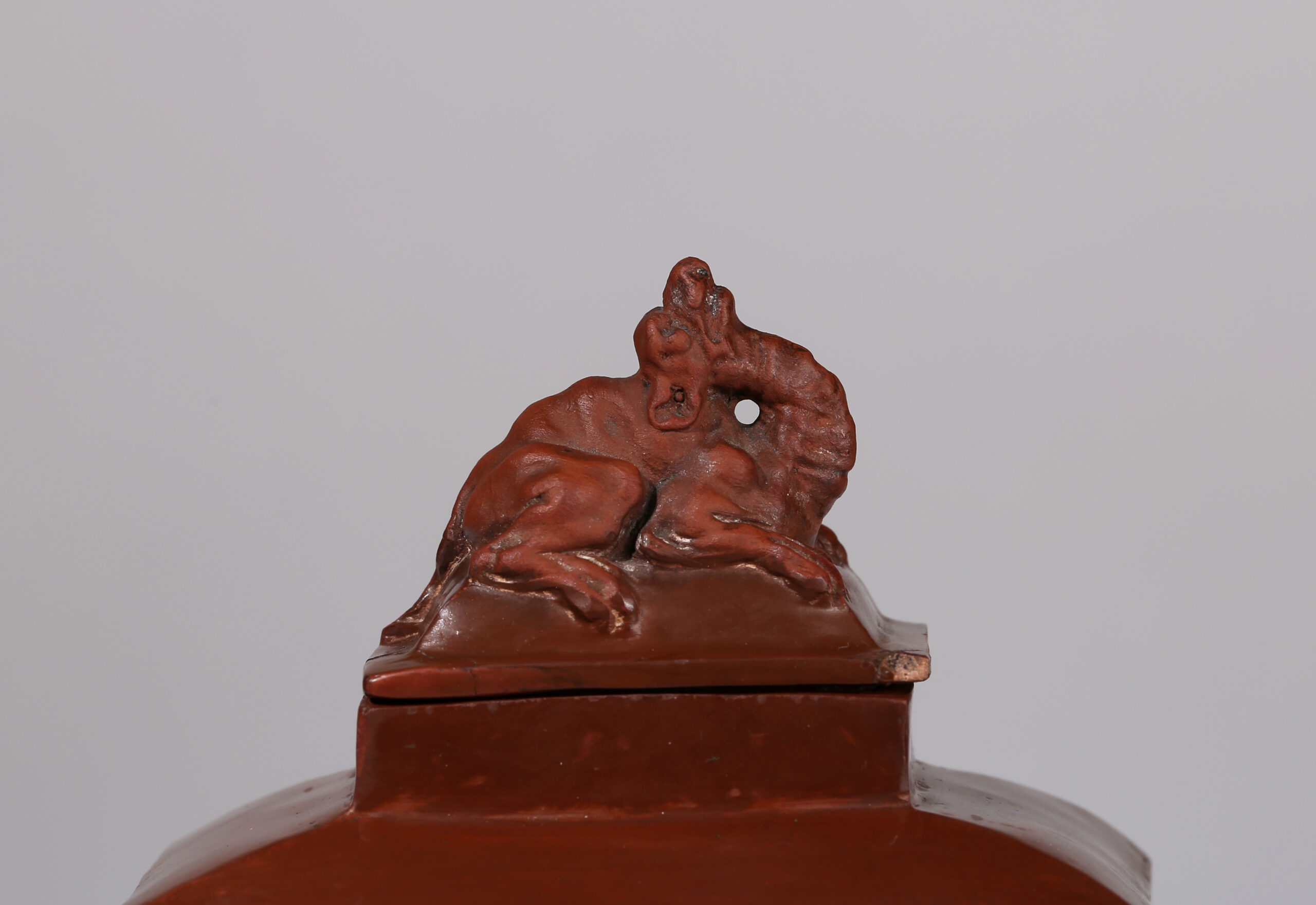The highly polished rectangular body with branch spout and handle and raised leaves with traces of ‘cold’ green decoration. The finial modelled as a mythical beast with pointed tail.
Very little is known of the factory of Plaue an der Havel beyond what Ernst Zimmerman, the director of the Porzellansammlung in Dresden published in 1908. It was established around 1713 in Brandenburg, about 70 miles west of Berlin, by a Prussian minister Friedrich von Görne with the help of a runaway workman from Meissen, Samuel Kempe. Kempe, who had worked with Johann Friedrich Böttger, arrived in Berlin claiming to be able to build very efficient furnaces which created great heat from little wood. Initially he thought this would be useful in the royal saltworks, but they were soon diverted to the production of a close imitation of Böttger’s red stoneware. They had also hoped to make porcelain but failed in the attempt.
By 1715, von Görne had already invested far more than ten thousand thalers in the factory without having made the slightest profit, and a Berlin merchant who reported to Böttger, had found no more than 50 polished pieces, most of which were “heavy, clumsy and unconventional”. Böttger acquired twelve examples about which he was quite dismissive but which Augustus the Strong, found to be equal to the Meissen wares, except that they were not as neatly worked and not as diligently “bossiert” or assembled (Zimmerman p. 610).
At its best the actual material of Plaue wares is almost indistinguishable from that of Böttger stoneware. Zimmerman considered it a little more irregular and with more imperfections. The forms are generally more distinct, lacking the precision and refinement of the more accomplished silver-inspired Böttger models (although it should be noted that Böttger’s earliest vessels are simply clumsy copies of Chinese pieces). However, some pieces show considerable ambition.

Plaue an der Havel Henry Arnhold Collection
Two of the finest pieces of Plaue stoneware are the polished teapot with high handle from the Arnhold collection (no. 382) and the similar, black-glazed example from the von Klemperer collection (no. 817). We can attribute our teapot to the same group because of the similarity of design and execution of the strange demonic mythical beast which forms the final.


Gustav von Klemperer Collection
Condition:
Old restoration to two corners of cover, handle restuck
Provenance:
The Property of a German Baroness, sold Sotheby’s, London, 24 February 2015, lot 236
Sir Jeffrey Tate and Klaus Kuhlemann collection
References:
Ernst Zimmermann, ‘Plaue a. d. Havel, die erste Konkurrenzfabrik der Meißner Manufaktur und ihre Erzeugnisse’, Monatshefte füer Kunstwissenschaft, I.Jahrg, Heft 7/8, Juli-August 1908 (Verlag Klinkhart und Biermann, Leipzig), pp. 602 – 619
Barbara Szelegejd, Red and Black Stoneware and their Imitations in the Wilanów Collection, (Published by Wilanów Palace Museum, 2013)
Heike Köhler, Keramik aus Plaue an der Havel. Zur Geschichte der ersten preußischen “Porcellain Fabrique” 1713 – 1730 ; Catalogue of the Exhibition in Museum im Frey-Haus, Brandenburg, from 8 May to 25 September 2005
- Cassidy-Geiger, The Arnhold Collection of Meissen Porcelain 1710-50 (2008), no. 382
Ludwig Schnorr von Carolsfeld, Porzellansammlung Gustav von Klemperer, (Dresden 1928), no. 817, plate 2
SOLD






